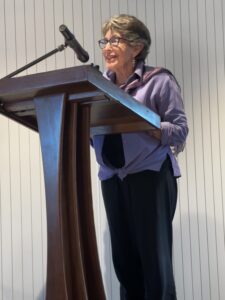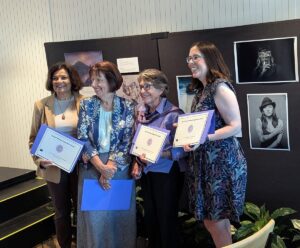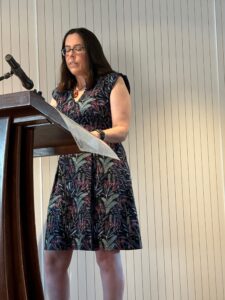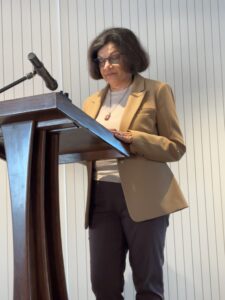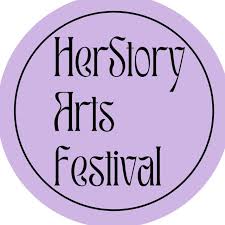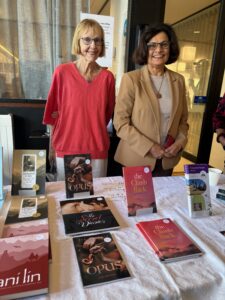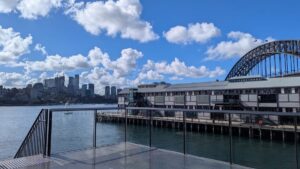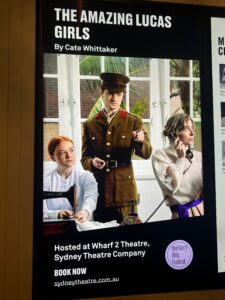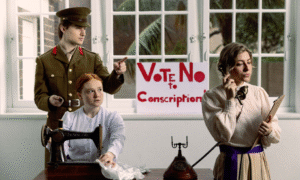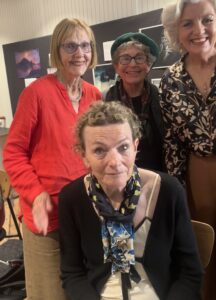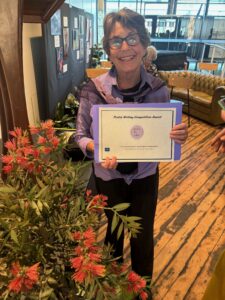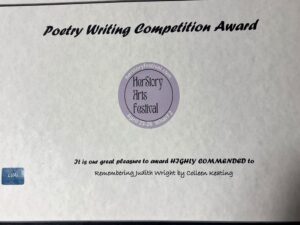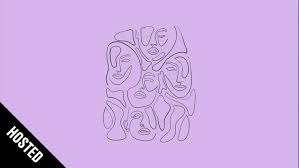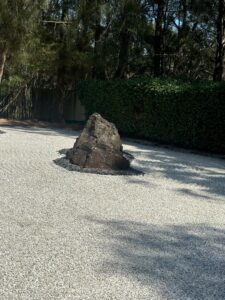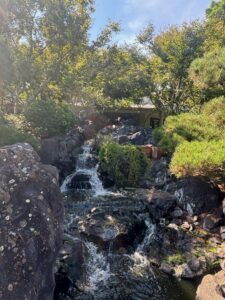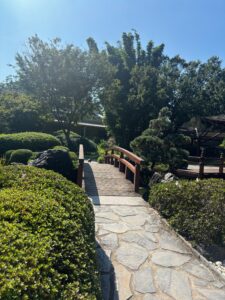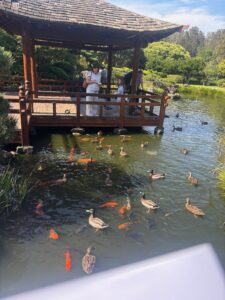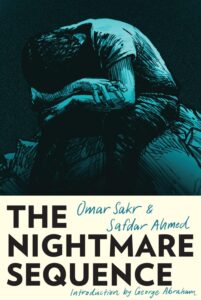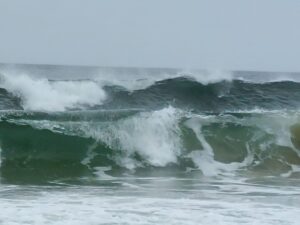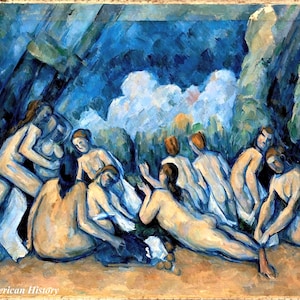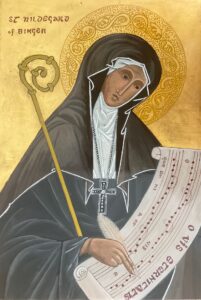
Icon Of Hildegard of Bingen created by Iconographer Kevin Dilks. ( Brother to my friend Julie Thorndyke).
Thank you Kevin. It was a most beautiful gift to receive this icon . It took me back into a contemplation with Hildegard.
I played my CD “Feather on the Breath of God “as I took time to gaze on Kevins icon, allowing myself to be lost in it.
Hildegard’s eyes are beautiful. They are lowered in her humble way. They are focused on scribing her musical notes and creating poetry to sing, and I feel those eyes are showing her mind is singing as she notates.
The feather has the double meaning of the quill for her scribing and the reminder for us that she calls herself “The Feather on the breath of God ”
From my poem of the same name, pgs 57-58, a young Hildegard races in from the field, from picking herbs for Jutta to prepare the tonics for the sick , Hildegard exclaims,
Jutta, Jutta, she calls
it is so beautiful.
I see the Light and beyond to the heavens,
not as in ecstasy but with my eyes wide open.
I want to express myself,
I feel so blessed.
She plucks a feather
from under her coarse, homespun cape,
and look . . . a gift. I know there are always feathers,
but this was special, as I watched it drift,
I felt a ‘yes’ to life.
Ah, I am a feather on the breath of God.
She turns both hands in the air,
eyes to the heavens,
a twirl of gratitude,
a dance of light.
The words Hildegard is writing in Kevin’s icon are the uplifting promise for her women living and working in their Abbey at Rupertsberg.
. O vis eternitatis O power within Etenity
que omnia ordinasti in corde tuo, All things you hold in your heart
per Verbum tuum omnia creata sunt And through your word were all created
sicut voluisti, et ipsum Verbum tuum according to your will.
And finally in my meditation with Kevin’s icon, I paused on the golden halo. Many icons use this to portrait a holy person. Several thoughts came to mind. To think Hildegard was called a saint at her death by her communities and by the local people, east and west, all along the Rhine River wherever her influence had reached in the 12th century.* and Rome rejected their request for Sainthood. Three hundred years on the Abbess of the Benedictian Community applied for her to be made a saint again and it was again rejected by the Vatican. When the Abbey asked later, the paperwork had been lost ! And so she was lost to the world for hundreds of years . Only at the beginning of the late 50’s and early 60’s, the Environmental Movement when Mother earth was beginning to be in pain from the damage done to her, did a Dominican Priest Father Matthew Fox rediscover her and had her writings translated finding her an Environmental Mystic.
Hildegard had been forgotten for 900 years !!! and then others began to discover her music, her paintings , her poetry and bring her back to our world.
If ever there was a time for her to speak it is now. Of course the Vatican saw her being a spokesperson for so many and the German pope canonised her in 2012 not only canosied her but made her A Doctor of the Church. To me it was too late. However in a way, I guess it introduces her to another layer of people in the Churches and hence increases her influence, so that is good.
Finally i traced, in my mind the Infinity symbols that are softly embedded in the halo. The Infinity Symbol (A Christian symbol of God’s eternal and infinite nature) I wonder if the fish (Ichthys symbol) was an early attempt to show this, before a Mathematician claimed it firstly in the 16th century.
*(Many Monasteries and Abbeys bought her music which encouraged their communities . By the way this is one of the ways that Rupertsberg received money so her Scriptorium was invaluable as she taught her women to dictate and scribe the many works that she sold. )
“With music, we have the memory of paradise lost”- Hildegard von Bingen”.
Hildegard created over 77 unique songs. She considered music the point where heaven and earth meet. She believed harmony to be more than the combination of voices and instruments,. For her it represented the balance of body and soul, the interconnectivity of humanity with the universe.
Hildegard composed secular music, sacred polyphony, hymns, and chants. She used music and art to express her visions; in fact, it has been said that Hildegard composed in pictures and painted with words.
Oliver Sacks, the great neuroscientist and admirer of Hildegard, observed that humans naturally keep time to music, using hypnotic sounds to enter trance-like states of meditation. Further, music has been found to contribute to synchronicity between the two brain hemispheres, resulting in more effective whole-brain thinking.
Hildegard used music as a way to a third state of consciousness. She did not express it in this 21st century vernacular but Hildegard knew its importance for her women, physically, mentally, emotional and spiritually. Some of her music written for the eight breaks in the Benedictine Day helped with breathing and well being. Severl pieces have notes that rise to high A which can give a sense of transcendence similar to other religions like the Sufi’s Whirling Dervish. *

Along with sleep and dreams Hildegard viewed music as the key to opening a third state of consciousness, a trance-like state. Her firm mooring in faith, combined with openness to the metaphysical, enabled Hildegard and her contemporaries to use music as an auto-suggestive relaxation technique. This meditation was based on the belief that music provides the human organism with positive influence in the healing processes.
To think that her music was banned towards the end of her life .** In the winter of her days she inspired her women in their silence under pain of their Abbey being destroyed :
Let us find purpose in our day,
Hildegard counsels after matins
find music in the fields
in the sun’s warmth,
in glints of gold on boughs of trees.
Rejoice in the aroma of the damp earth
and viriditas.
Spring is at the node of every greening branch.
May even the wind be our song.
. . . . . . and in the silence they learn,
in Hildegard’s words,
to search out the house of their hearts.
* Whirling Dervishes is a form of physically active meditation which originated among Sufi groups, and which is still practiced by the Sufi Dervishes in some places.
** From the poems Struggle in Exile pg 210 and Endurance pg 212 in Hildegard of Bingen A Poetic Journey by Colleen Keating 2019©️
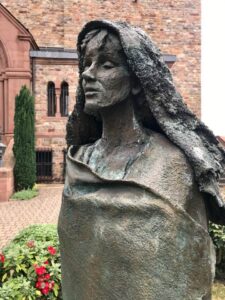
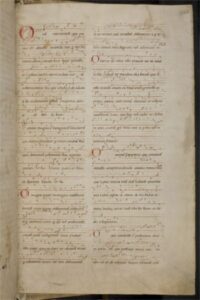
Hildegard today at the Abbey and the ruins of her original Abbey at Disibodenberg
Hildegard composed secular music, sacred polyphony, hymns, and chants. She used music and art to express her visions; in fact, it has been said that Hildegard composed in pictures and painted with words.
Oliver Sacks, the great neuroscientist and admirer of Hildegard, observed that humans naturally keep time to music, using hypnotic sounds to enter trance-like states of meditation. Further, music has been found to contribute to synchronicity between the two brain hemispheres, resulting in more effective whole-brain thinking.
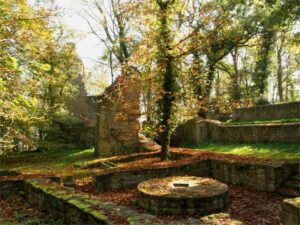
Ruins of Disibodneberg in Germany . Hildegards first Abbey.

Riesencodex

